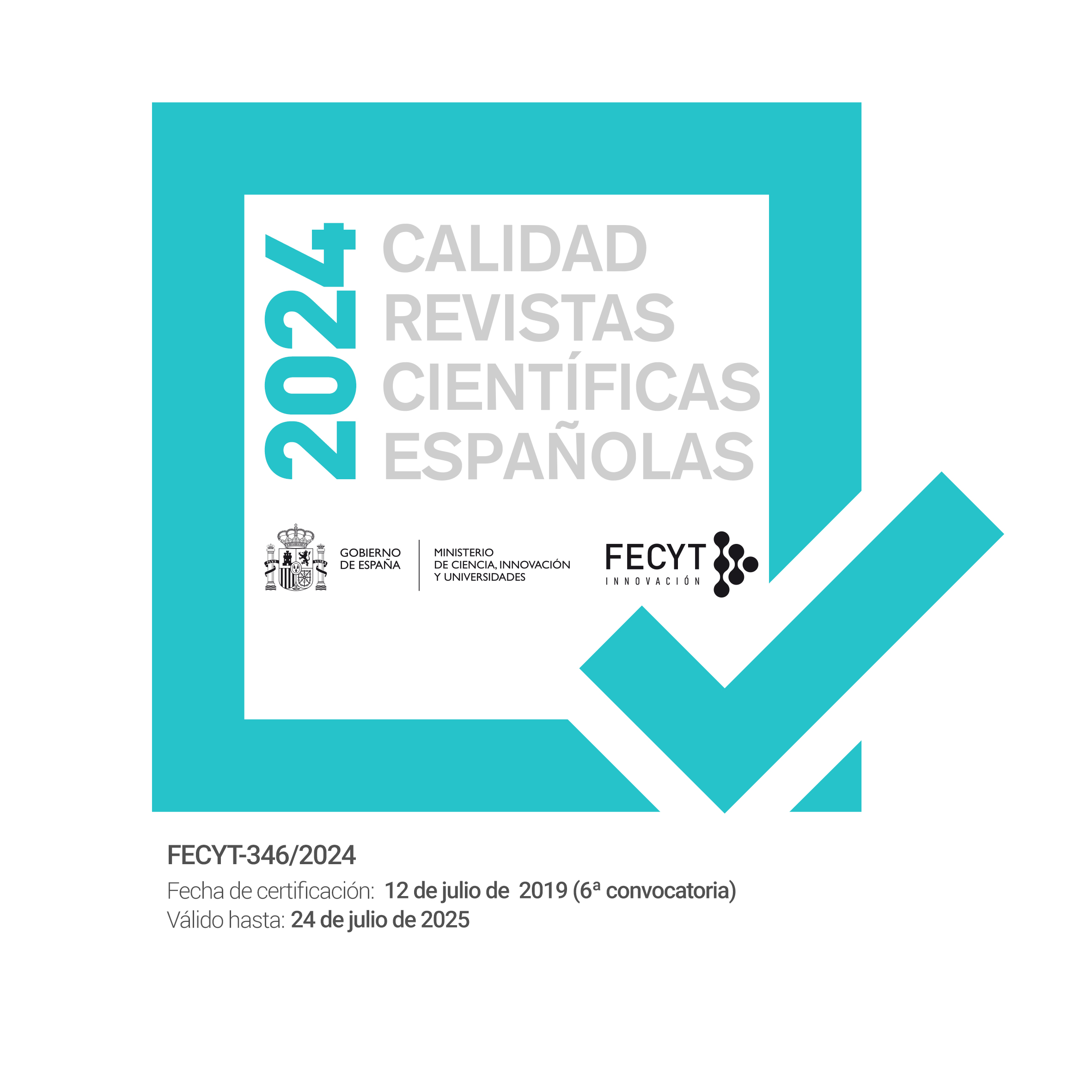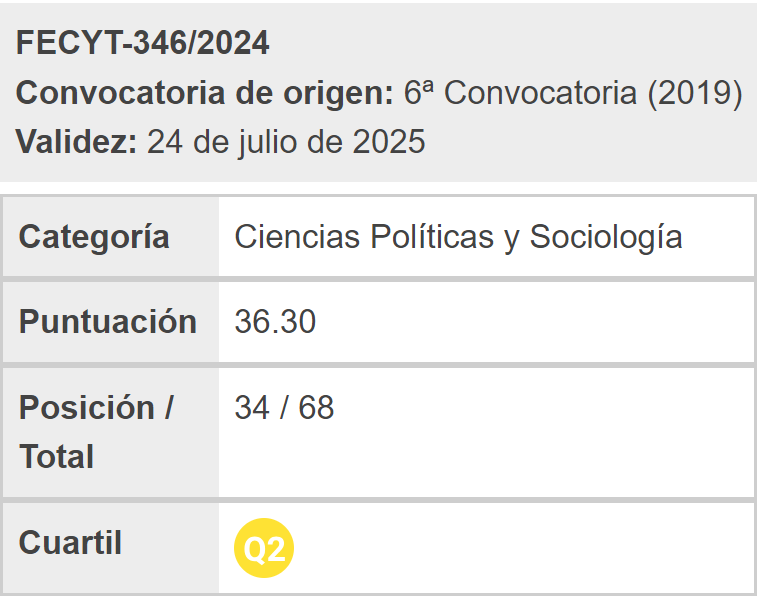Consumidad: una categoría para el análisis de las prácticas de explotación socioespacial en el medio rural a nivel global
Palabras clave:
Consumo, Medio rural, Comunidad, Turismo, CiudadaníaResumen
El artículo propone la categoría socio-espacial a nivel global de consumidad con base en el estudio comparativo de cuatro territorios rurales comercio-turístico-residenciales ubicados en México, España, China y Emiratos Árabes Unidos. El objetivo del artículo es describir e interpretar los seis elementos que, combinados, permiten generar la mencionada categoría: las consumidades son comunidades elitizadas de residentes; el espacio que ocupan es propiedad privada; tienen un área claramente delimitada; el acceso de cualquier persona al espacio está controlado de alguna manera; ofrecen servicios comerciales superfluos; y son un destino turístico atractivo. La investigación se desarrolla combinando diversos métodos de investigación bibliográfica, análisis de contenido, trabajo de campo etnográfico y representación cartográfica. El texto hace una significativa contribución al debate académico de las lógicas globales de acumulación capitalista en su proyección socio-espacial en el medio rural. De manera novedosa por su intensidad y velocidad acelerada, los grupos económicos dominantes están reconociendo un patrón de explotación socioespacial –la consumidad– que erige al consumo en forma hegemónica de relacionarse entre los miembros de la comunidad, entre estos y el resto de la población, y entre todos ellos y el territorio.
Descargas
Citas
Appadurai, Arjun (1996). The social life of things. Commodities in cultural perspective. Cambridge University Press.
Atkinson, Rowland y John Flint (2004). Fortress UK? Gated communities, the spatial revolt of the elites and time–space trajectories of segregation. Housing Studies, 19(6), 875-892. https://doi.org/10.1080/0267303042000293982
Auge, Marc (2000). Los no lugares. Espacios del anonimato. Gedisa.
Ayuntamiento de Chipiona (2019). Plan de Calidad Turística de Chipiona 2019-2023, (http://www.turismodechipiona.com).
Ayuntamiento de Rota (2023). Descubre Rota. Costa Ballena, el paraíso, (http://aytorota.es/descubrerota.html).
Bamakhrama, Salim Salah (2015). Cities within cities: An urbanization approach in the Gulf countries. Trabajo Fin de Máster. Master of Arts in Architecture, University of California.
Beltrán, Lidia y Josep Roca (2017). New holiday towns as non-places. The case of Marina d’Or. Ara: Journal of Tourism Research, 3(2), 25-33.
Brossat, Ian (2018). Airbnb: la ville ubérisée. La ville brûle.
Cocola-Gant, Agustín; Ana Gago y Jaime Jover (2020). Tourism, gentrification and neighborhood change: An analytical framework – Reflections from Southern European cities. En J. Oskam (Ed.), The overtourism debate (pp. 121-135). Emeral Publishing Limited.
Comaroff, John L. y Jean Comaroff (2009). Ethnicity, Inc. University of Chicago Press.
Corneo, Giacomo y Olivier Jeanne (1997). Conspicuous consumption, snobbism and conformism. Journal of Public Economics, 66, 55-71. https://doi.org/10.1016/S0047-2727(97)00016-9.
Countryeconomy.com (2023). National Minimum Wage, (https://countryeconomy.com/national-minimum-wage).
Davidson, Mark y Loretta Lees (2010). New-build gentrification: Its histories, trajectories, and critical geographies. Population, Space and Place, 16, 395-411. https://doi.org/10.1002/psp.584.
Dubois, David; SungJin Jung y Nailya Ordabayeva (2021). The psychology of luxury consumption. Current Opinion in Psychology, 39, 82-87. https://doi.org/10.1016/j.copsyc.2020.07.011.
Falconcity of Wonders (2023). Falconcity, the world in a city, (http://falconcity.com).
Ferreira, Jennifer; Carlos Ferreira y Elizabeth Bos (2021). Spaces of consumption, connection, and community: Exploring the role of the coffee shop in urban lives. Geoforum, 119, 21-29. https://doi.org/10.1016/j.geoforum.2020.12.024.
García Canclini, Néstor (1990). Culturas híbridas. Grijalbo.
García Canclini, Néstor (2001). Consumers and citizens. Globalization and multicultural conflicts. University of Minnesota Press.
Gascón, Jordi y Ernest Cañada (Coords.) (2016). Turismo residencial y gentrificación rural. PASOS - Foro de Turismo Responsable.
González-Fuente, Iñigo y Hernán Salas (2019). Plantar la Toscana en México. Comunidad-consumo, patrimonio franquicia y gentrificación rural. Biblio3W, XXIV, 1272. https://doi.org/10.1344/b3w.0.2019.28439.
Harvey, David (2003). The new imperialism. Oxford University Press.
Idealista.com (2023). Se me ha quedado pequeña, (www.idealista.com).
Hübscher, Marcus y Miriam Borst (2023). On the relationship between short-term rentals and gentrification: the case of Airbnb in Munich (Germany). Geografie, 128(1), 1-24. https://doi.org/10.37040/geografie.2022.013.
INE (Instituto Nacional de Estadística) (2023). Demografía y población, (https://www.ine.es/index.htm).
Janoschka, Michael; Jorge Sequera y Luis Salinas (2014). Gentrification in Spain and Latin America: a critical dialogue. International Journal of Urban and Regional Research, 38(4), 1234-1265. https://doi.org/10.1111/1468-2427.12030.
Jayne, Mark (2006). Cities and consumption. Routledge.
Jirón, Paola y Pablo Mansilla (2014). Las consecuencias del urbanismo fragmentador en la vida cotidiana de habitantes de la ciudad de Santiago de Chile. EURE, 40(121), 5-28. http://dx.doi.org/10.4067/S0250-71612014000300001.
Katodrytis, George y Sharmeen Syed (2016). Gulf cities as interfaces. Gulf Research Centre.
Laudenbach, Catherine Anne (2016). Landscapes of desire. The contemporary tourist: Photographic performances, the camera and place. Tesis Doctoral. Charles Sturt University.
Laval, Christian (2016). «Commun» et «communauté»: un essai de clarification sociologique. SociologieS, 19 de octubre, https://journals.openedition.org/sociologies/5677. https://doi.org/10.4000/sociologies.5677.
Mah, Alice (2012). Industrial ruination, community, and place: landscapes and legacies of urban decline. University of Toronto Press.
Mansvelt, Juliana (2008). Geographies of consumption: citizenship, space and practice. Progress in Human Geography, 32(1), 105-117. https://doi.org/10.1177/0309132507080623.
Margaritoff, Marco (2021). Inside Hallstatt, China’s perfect replica of a picturesque Austrian village. All That’s Interesting, 1 de abril, https://allthatsinteresting.com/hallstatt.
Mazzocco, Philip J.; Derek D. Rucker; Adam D. Galinsky y Eric T. Anderson (2012). Direct and vicarious conspicuous consumption: Identification with low-status groups increases the desire for high-status goods. Journal of Consumer Psychology, 22(4), 520-528. https://doi.org/10.1016/j.jcps.2012.07.002.
Mckay, Ben; Alberto Alonso-Fradejas y Arturo Ezquerro-Cañete (Coords.) (2022). Extractivismo agrario en América Latina. University of Calgary - CLACSO.
McWatters, Mason R. (2008). Residential tourism: [de]constructing paradise. Channel View Publications.
Messmer, Lukas (2015). Feature: Hallstatt – An Austrian town in China where no one is home. Hong Kong Free Press, 7 de julio, https://hongkongfp.com/2015/07/07/hallsatt-an-austrian-town-in-china-where-no-one-is-home/.
Moore, Jason W. (2015). Capitalism in the web of life: Ecology and the accumulation of capital. Verso Press.
Murphy, Laurie; Gianna Moscardo; Pierre Benckendorff y Philip Pearce (2011). Evaluating tourist satisfaction with the retail experience in a typical tourist shopping village. Journal of Retailing and Consumer Services, 18, 302-310. https://doi.org/10.1016/j.jretconser.2011.02.004
Nair, Deepthi (2011). Falconcity: Dubai's best-kept secret? Gulf News, 1 de junio, https://gulfnews.com/general/falconcity-dubais-best-kept-secret-1.811596.
Paniccia, Paola Maria Anna y Luna Leoni (2019). Co-evolution in tourism: the case of Albergo Diffuso. Current Issues in Tourism, 22(10), 1216-1243. https://doi.org/10.1080/13683500.2017.1367763.
Redclift, Michael (2005). 'A Convulsed and Magic Country': Tourism and Resource Histories in the Mexican Caribbean. Environment and History, 11(1), 83-97.https://doi.org/10.3197/0967340053306167.
Rozental, Sandra; John F. Collins y Jason Ramsey (2016). Matters of patrimony: Anthropological theory and the materiality of replication in contemporary Latin America. The Journal of Latin American and Caribbean Anthropology, 21(1), 7-18. https://doi.org/10.1111/jlca.12194.
Salas, Hernán e Iñigo González-Fuente (2022). Rural gentrification in Mexico. Fragmenting space, displacing civitas, exploiting everyday life. Revista Latinoamericana de Estudios Rurales, 7(13), 1-27.
Salazar, Noel B. (2006). The Anthropology of Tourism in developing countries: A critical analysis of tourism cultures, powers and identities. Tabula Rasa, 5, 99-128.
Sassen, Saskia (2014). Expulsions: Brutality and complexity in the global economy. The Belknap Press of Harvard University Press.
Sequera, Jorge y Jordi Nofre (2018). Shaken, not stirred: New debates on touristification and the limits of gentrification. City. Analysis of Urban Change, Theory, Action, 22(5-6), 843-855. https://doi.org/10.1080/13604813.2018.1548819.
Slater, Tom (2006). The evistion of critical perspectives from gentrification research. International Journal of Urban and Regional Research, 30(4), 737-757. https://doi.org/10.1111/j.1468-2427.2006.00689.x.
Steigemann, Anna Marie (2017). Social practices in a café: Community through consumption? Geographica Helvetica, 72, 45-54. https://doi.org/10.5194/gh-72-45-2017.
Stillman, Tyler F.; Frank D. Fincham; Kathleen D. Vohs; Nathaniel M. Lambert y Christa A. Phillips (2012). The material and immaterial in conflict: Spirituality reduces conspicuous consumption. Journal of Economic Psychology, 33(1), 1-7. https://doi.org/10.1016/j.joep.2011.08.012.
Sturken, Marita y Lisa Cartwright (2009). Practices of looking: An introduction to visual culture. Oxford University Press.
ThisIsChina.net (2023). Hallstatt See, (http://www.thisischina.net/huizhou/listings/37/).
Tapada-Berteli, Teresa (2021). Los espacios extremos como categoría analítica. Scripta Nova, 25(2), 179-188. https://doi.org/10.1344/sn2021.25.35308.
Torres, Laura; Gabriela Pastor; María Grosso y Ana Scoones (2018). Turismo de lujo y extractivismo: La ruralidad como presa del capital. Reflexiones a propósito de Valle de Uco (Mendoza, Argentina). Scripta Nova, XXII(585). https://doi.org/10.1344/sn2018.22.19210.
Val’Quirico (2023). Val’Quirico, (https://valquirico.com/).
VillaDeRota.com (2023). Costa Ballena, (villaderota.com/villa-de-rota/costa-ballena.html).
Walters, Timothy N.; Alma Kadragic y Lynne M. Walters (2006). Miracle or mirage: Is development sustainable in the United Arab Emirates? Middle East Review of International Affairs, 10(3), 77-91. https://doi.org/10.1108/OHI-01-2019-B0002
Wacquant, Loïc (2009). Punishing the poor: The neoliberal government of social insecurity. Duke University Press.
WageIndicator.org (2023). Minimum Wage, (https://wageindicator.org/salary/minimum-wage).
Wallis, William y Roula Khalaf (2006). Adolescent ’Dubai shifts focus of its energy inland. Financial Times, 22 de mayo, https://www.ft.com/content/b45fa0fe-e8e6-11da-b110-0000779e2340.
Woodruffe-Burton, Helen; Sue Eccles y Richard Elliott (2002). Towards a theory of shopping: A holistic framework. Journal of Consumer Behaviour, 1(3), 256-266. https://doi.org/10.1002/cb.71.
Yin, Chengzhi y Xingyu Qian (2020). The spatial production of simulacrascape in urban China: Economic function, local identity and cultural authenticity. Cities, 104, artículo 102806. https://doi.org/10.1016/j.cities.2020.102806
Descargas
Publicado
Cómo citar
Número
Sección
Licencia
Derechos de autor 2024 Encrucijadas. Revista Crítica de Ciencias Sociales

Esta obra está bajo una licencia internacional Creative Commons Atribución-NoComercial-SinDerivadas 4.0.
Los autores/as conservan los derechos de autor y ceden a la revista el derecho de la primera publicación, con el trabajo registrado con la licencia de atribución de Creative Commons Reconocimiento-NoComercial (CC-BY 4.0), que permite a terceros utilizar lo publicado siempre que mencionen la autoría del trabajo y a la primera publicación en esta revista. Encrucijadas permite y se anima a todas las personas autoras a depositar la versión final publicada en repositorios institucionales o temáticos de acceso abierto, cumpliendo en caso necesario los términos establecidos por la entidad financiadora de la investigación.




